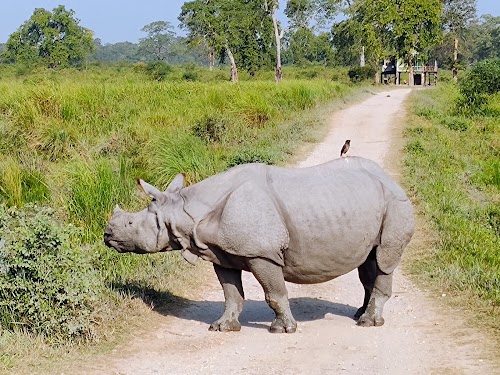
Kaziranga National Park
Nagaon, India
- Birdwatching-spot diverse avian species
- Capture scenic landscapes and wildlife photos
- Enjoy jeep safari for wildlife viewing
- Explore the park via boat safari
- Take elephant safari for closer encounters
- Visit the Kaziranga Orchid and Biodiversity Park
Known for:
Description:
Kaziranga National Park, a UNESCO World Heritage Site, is a sprawling grassland ecosystem in Assam, India, renowned for its remarkable biodiversity. It is the world's primary habitat for the Indian one-horned rhinoceros, harboring over two-thirds of the global population. The park also boasts significant populations of elephants, tigers, wild water buffalo, and swamp deer. Birdwatchers will be delighted by the diverse avian species, including migratory birds and endemic species. Visitors can explore the park through jeep safaris, elephant safaris, and boat safaris, offering unique perspectives on the wildlife and landscape. The park's lush greenery, interspersed with water bodies, creates a picturesque setting for wildlife encounters and nature photography. Kaziranga promises an unforgettable experience for wildlife enthusiasts and nature lovers alike.
History:
The history of Kaziranga National Park is intertwined with conservation efforts. In 1905, Lady Curzon, the wife of the Viceroy of India, visited the area and was dismayed by the declining rhino population. She urged her husband to take immediate action to protect these magnificent creatures. Consequently, Kaziranga Proposed Reserve Forest was created in the same year. Over the years, the reserve underwent several expansions and was declared a game sanctuary in 1916. In 1950, it was renamed Kaziranga Wildlife Sanctuary. Recognizing its ecological significance, Kaziranga was declared a National Park in 1974 and a UNESCO World Heritage Site in 1985. Today, it stands as a testament to successful conservation initiatives and a haven for endangered species.